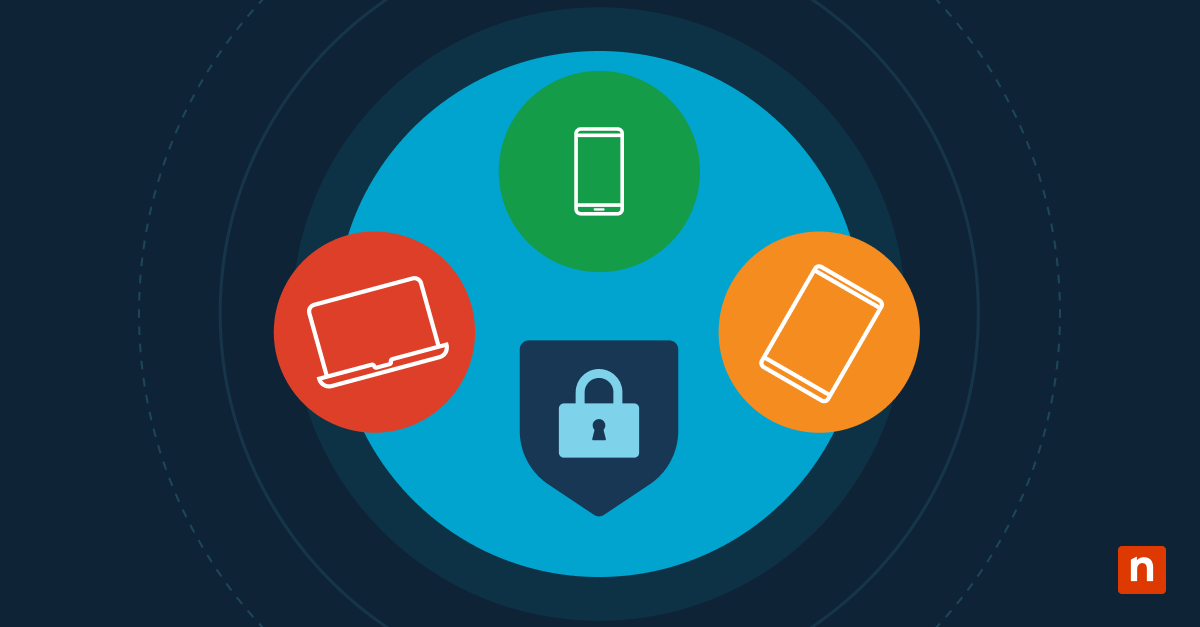Some users may want to learn how to remove the notification bell from the taskbar in Windows 11. While it’s a useful tool that keeps people informed on whether or not they have notifications, some users may find it distracting and unhelpful.
There are several ways to add or remove the notification bell icon, both for individual users and IT administrators. Mastering these methods can help people customize their own experiences according to their preferences while also staying compliant with their organization’s policies.
3 ways to remove the notification bell in the taskbar
Individual users can use the settings app to add or remove the notification bell from the taskbar. IT administrators can also take advantage of the Registry Editor or Command Prompt.
These changes have to be made per user and won’t apply to the whole system.
📌 Prerequisites:
- You will need a Windows 11 build 22635.3790 or newer.
- This guide applies to all editions of Windows 11.
📌 Recommended deployment strategies:
Click to Choose a Method | 💻 Best for Individual Users | 💻💻💻 Best for Enterprises |
| Method 1: Settings app (per user) | ✓ | |
| Method 2: Registry Editor (per user) | ✓ | ✓ |
| Method 3: Command Prompt (per user) | ✓ | |
| Method 4: PowerShell (per user) | ✓ |
Method 1: Settings app (per user)
📌 Use Case: This method is ideal for individual users.
- Open the Start Menu > Settings.
- Go to System > Notification.
- Open the Notifications dropdown menu.
- Select the box next to Show notification bell icon to show the bell. To hide it, clear the box.
- You can now close the Settings app. The changes will apply immediately.
Method 2: Registry Editor (per user)
📌 Prerequisite: You will need administrator access for this method. To check if you have the necessary permissions, open the Start Menu > Settings > Accounts. The word “Administrator” should be printed under the username.
📌 Use Case: This method can be used by advanced users or by IT administrators working with managed devices.
- Open the Start Menu and search for the Registry Editor to open the program.
- Navigate to this address:
HKEY_CURRENT_USER\Software\Microsoft\Windows\CurrentVersion\Explorer\Advanced. - Find the ShowNotificationIcon value and double-click it. If you can’t locate it, follow these steps to create it:
- Right-click Advanced > New > DWORD (32-bit) Value.
- Name it ShowNotificationIcon.
- Change the value to 1 to show the notification bell. To hide it, change the value to 0.
- Click OK.
- You can now close the Registry Editor. Restart the computer to apply the changes.
Method 3: Command Prompt (per user)
📌 Prerequisite: You will need administrator access for this method. To check if you have the necessary permissions, open the Start Menu > Settings > Accounts. The word “Administrator” should be printed under the username.
📌 Use Case: This method can be used in enterprise scenarios.
- Open the Start Menu and search for Command Prompt.
- Right-click Command Prompt > Run as administrator.
- To show the bell, type the following and press Enter:
reg add “HKCU\Software\Microsoft\Windows\CurrentVersion\Explorer\Advanced” /v ShowNotificationIcon /t REG_DWORD /d 1 /f - To hide the bell, type this instead:
reg add “HKCU\Software\Microsoft\Windows\CurrentVersion\Explorer\Advanced” /v ShowNotificationIcon /t REG_DWORD /d 0 /f - You can now close Command Prompt. Restart the computer to apply the changes.
Method 4: PowerShell (per user)
📌 Prerequisite: You will need administrator access for this method. To check if you have the necessary permissions, open the Start Menu > Settings > Accounts. The word “Administrator” should be printed under the username.
📌 Use Case: This method is ideal for enterprise environments. Administrators can automatically deploy PowerShell scripts through a remote PowerShell tool to all their managed devices to make the change.
- Open the Start Menu and search for Windows PowerShell.
- Right-click Windows PowerShell > Run as administrator.
- To show the bell, type the following and press Enter:
New-Item -Path “HKCU:\Software\Microsoft\Windows\CurrentVersion\Explorer\Advanced” -Force | Out-Null Set-ItemProperty -Path “HKCU:\Software\Microsoft\Windows\CurrentVersion\Explorer\Advanced” -Name “ShowNotificationIcon” -Value 1 -Type DWord
- To hide the bell, type this instead:
New-Item -Path “HKCU:\Software\Microsoft\Windows\CurrentVersion\Explorer\Advanced” -Force | Out-Null Set-ItemProperty -Path “HKCU:\Software\Microsoft\Windows\CurrentVersion\Explorer\Advanced” -Name “ShowNotificationIcon” -Value 0 -Type DWord
- You can now close Windows PowerShell. Restart the computer to apply the changes.
⚠️ Things to look out for
| Risks | Potential Consequences | Reversals |
| Users might miss the notifications without a bell. | They may be unable to respond to important events if they don’t notice their notifications. | If a user has trouble noticing their notifications, it may be best to keep the notification bell on the taskbar. |
| Users may make incorrect edits to the Windows Registry. | Incorrect edits may lead to incorrect settings or system instability. | Create a backup before editing the Windows Registry. You can use this to restore the Registry if unintended changes are made. |
Additional considerations when adding or removing the notification bell icon on Windows 11
- Managing this feature has to be done per user. There’s no machine-wide option available.
- Removing the bell icon doesn’t disable notifications. Users can still view their notifications by pressing Win+N or by clicking the date and time in their taskbars.
- You need to restart File Explorer or the computer to see the change.
What does the notification bell do?
Windows notifications are there to keep people updated on all the messages and alerts they receive. The notification bell in the taskbar gives users a quick way to see if there are notifications they need to see. It can be a helpful reminder for people who need it. However, some users may find it distracting and difficult to work with.
Streamline the taskbar display by removing the notification bell icon
People have different preferences when it comes to the notification bell icon. Some users prefer to have it visible for accessibility and to more quickly know if they have notifications they need to address. Other people, on the other hand, might find the bell icon distracting and would prefer to have a cleaner interface.
There are several ways to add or remove the notification bell in the taskbar. Individual users can do it through the Settings app. For IT administrators, they can edit the Windows Registry through the Registry Editor, Command Prompt, or Windows PowerShell. However, it’s important to note that these changes only apply per user and there’s no native feature that can manage this setting for the whole device.
Related topics:
- How to Show or Hide Virtual Touchpad Icon on the Taskbar in Windows 11
- How to Show All Open Windows on the Taskbar for All Desktops in Windows 11
- How to Enable or Disable System Icons on Taskbar in Windows 10
- How to Pin Taskbar Items with PowerShell in Windows
- How to Pin a File, Folder, App or Website to the Taskbar in Windows
- How to Enable or Disable System Icons on Taskbar in Windows 10 [Video]
Quick-Start Guide
For the specific Notification Bell Icon, you would likely need to:
- Use a custom PowerShell script to modify the taskbar settings
- Deploy the script through NinjaOne’s scripting capabilities







